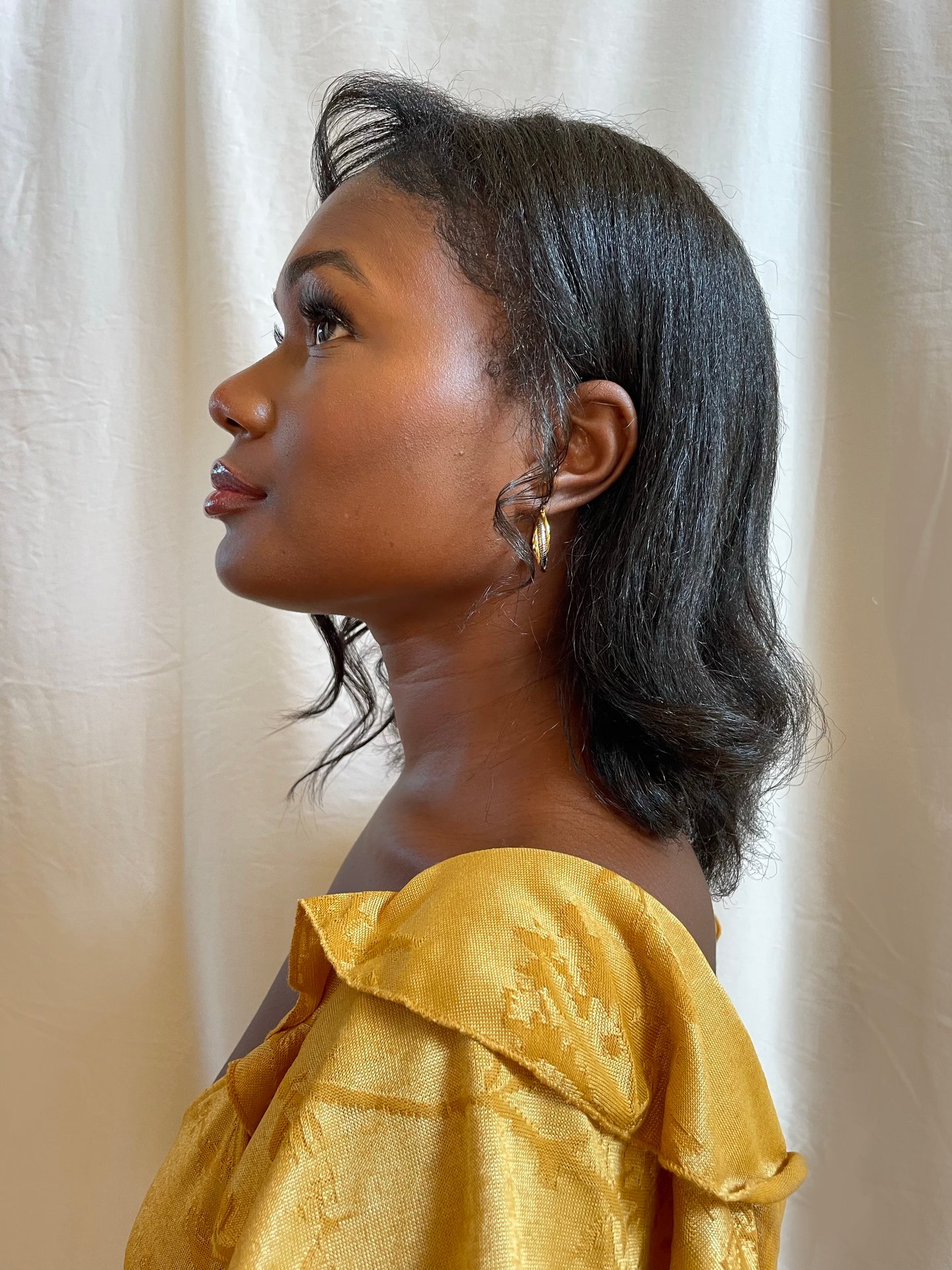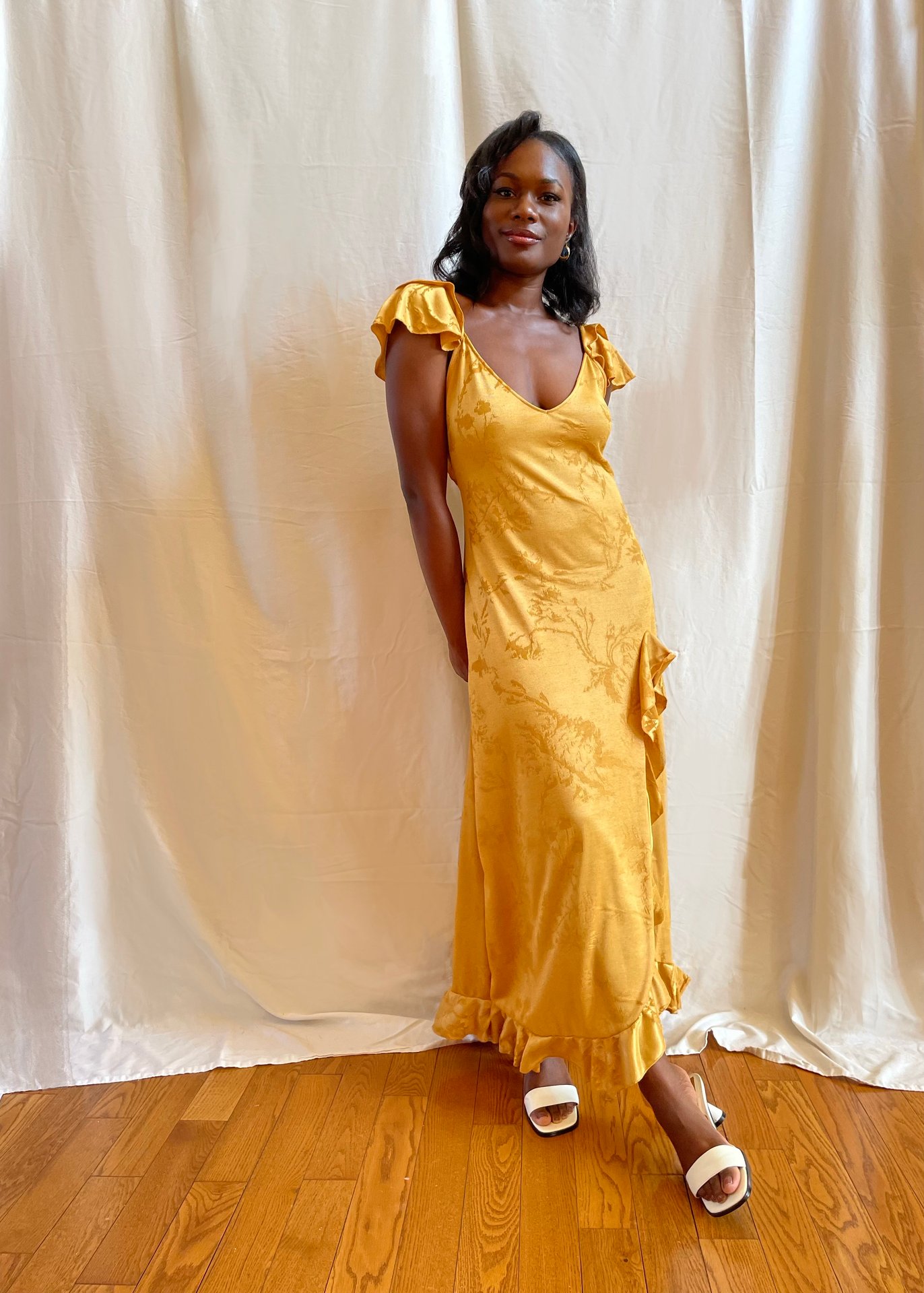For her thesis, In My Jumpsuit: An Analysis of the Embodied Experience of Women in Prison Clothing, Ricketts spoke to incarcerated women and made sure their stories shaped her work in a profound way. These stories inspired her to create Graves to Gardens, so that they are heard far and wide and not just heard by professors or fellow classmates.
“We don’t have to be on the surface level in the way we interact with fashion, it can be deeper,” said Ricketts. “There’s a lot to talk about in this relationship of fashion, clothing, incarceration, and how we adorn our bodies.”
Ricketts’ service in the community has heavily influenced Graves to Gardens. “It’s important for people in fashion to not only look at my platform but also platforms that have elevated stories that are unheard of,” she said.
“We all are engaging in fashion because we all are adorning our bodies. Our discourse doesn’t always look like luxury fashion. Are people even aware that the prison industrial complex plays a role in production of garments? We should think about the labor that goes into production and the hands that are touching the clothes that we put on our bodies.” Ricketts added.
We can see unconventional fashion to be extraordinary, completely out of the normative representations. So, we do not always think or hear about how unconventional fashion can be. It is not everyday that we hear about initiatives in fashion that questions or raises attention to incarceration, especially women who are incarcerated.
“We do have a responsibility to advocate for people who can’t do it for themselves. It’s not just imprisonment to speak about, we can speak to homelessness, poverty, immigration, and women’s rights. We live amongst each other so it’s a responsibility to protect and preserve each other.” Ricketts shared.
Ricketts has presented unheard stories and overshadowed narratives amongst women who are or have been incarcerated. In one episode, “This is Grace”, she spoke with Trans Right Activist Grace DeTreverah who was incarcerated as a trans woman in a men’s facility.
“We spoke about how clothing can be used to protect yourself against unwelcomed harm when you’re in a space that’s more harmful for you. ‘Especially when you’re different from everyone else in that environment’ as Grace put it,” said Ricketts.
In September 2022, Ricketts will be one of the leading curators for the “Clothing, Commissary and Carcerality” exhibition at the Arnold and Sheila Aronson Gallery. The exhibit centralizes the human experience behind bars by expressing the material conditions of incarceration. It will explore the ways that fashion functions as an oppressive force within carceral landscapes, while highlighting fashion’s unique potential and ongoing impressive engagement to work in opposition to carceral regimes.
Fashion will always play an important role in how we envision the world and it is important to honor women for their endless contributions. They are forever setting the bar and moving fashion forward. Behind all closed doors – whether it be your favorite brand or media platform – the creators, educators, and innovators are, too, the hands of women.





